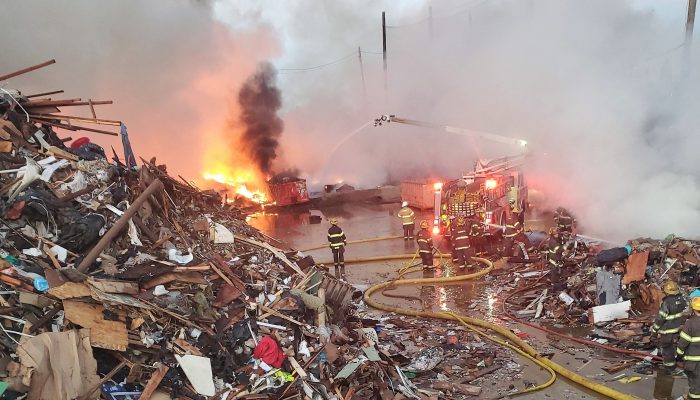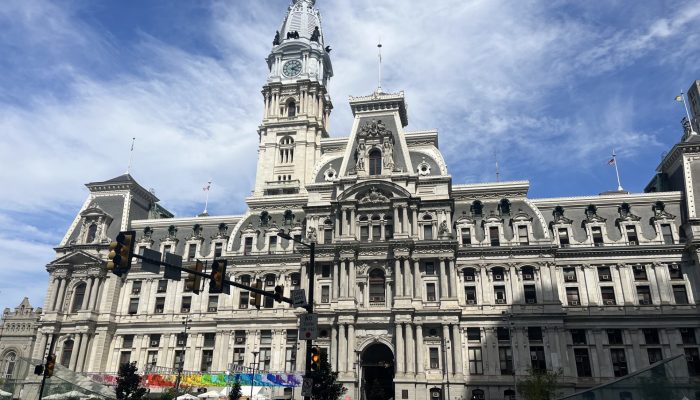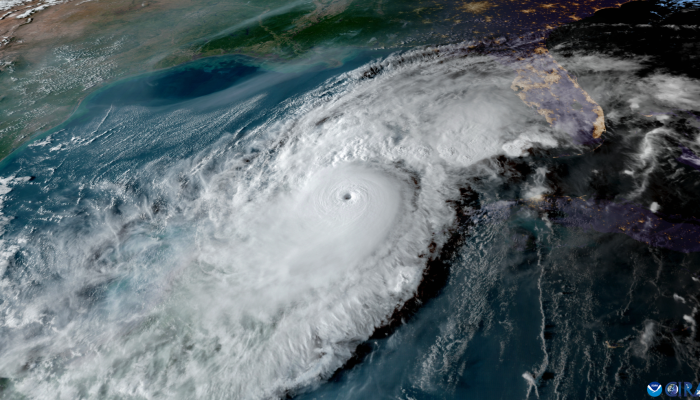The following information was released by the Philadelphia Department of Public Health.
November 10, 2021
Information on the Risk to Philadelphia Residents Following the Recent Recycling Center Fire
PHILADELPHIA—The Health Department’s Air Management Services released the results of air pollutant testing using samples collected during the fire earlier today. The Health Department’s lab found that no toxic compounds were identified in that sample at levels that would threaten the public’s health. The compounds identified were all found at levels thousands to hundreds of thousands of times below the levels where the EPA has identified as potentially causing long-term harm.
The biggest risk to the public from this fire is higher than normal levels of fine particles smaller than 2.5 micrometers, or PM 2.5, due to the smoke. People who are in areas of the city that are experiencing smoke or haze should try to limit their time outside. People who have heart and/or lung problems should try to not exert themselves due to the strain the smoky air might put on their systems. The smoke and haze may increase during the evening and overnight due to existing weather conditions.
Many people have noticed an odor due to the fire and some people have experienced nausea or headache. These symptoms may be due to the odor. Although they are not necessarily a sign of a dangerous exposure, people experiencing these symptoms should try to move to an area where the odor is less intense to relieve these symptoms. Some people are more sensitive than others to such odors and may experience these symptoms at lower levels of exposure.
“While it is a relief to know that the air in the area of the fire does not contain elevated levels of toxic chemicals, we are concerned about the exposure of neighborhood residents to particulate matter that can trigger respiratory symptoms, especially among those with asthma and other lung conditions,” said Health Commissioner Dr. Cheryl Bettigole. “While I wish this fire had never happened, this is an example of how the City must stay diligent in protecting communities like these. The Health Department is dedicated to reviewing and updating all of our emergency response plans to ensure that all communities can feel safe and protected even in situations like this.”
The Health Department maintains a network of air quality monitors throughout Philadelphia that constantly monitor for different air pollutants, including ozone, carbon monoxide, nitrogen dioxide, sulfur dioxide, lead, and particulate matter. These pollutants are what is seen most days, in some quantity, in our air. Generally speaking, air quality in Philadelphia is good and has improved markedly over the past several decades.
Smoke from fires, like the recycling center fire and wildfires out west, can release particulate matter, or PM, into the air. These fine particles can be breathed deep into the lungs and are associated with numerous health effects such as respiratory symptoms and disease, and decreased lung function. The elevated PM2.5 levels in Philadelphia due to this fire are high enough to cause some people to experience symptoms, but considerably lower than those seen out West during the recent wildfires.
Sensitive groups that appear to be at the greatest risk for such effects include children, seniors, and individuals with heart or lung conditions, such as asthma. Because of this danger, the Health Department continues to recommend that people in smoky or hazy areas limit their time outside and recommends that people who have heart and/or lung problems should try to not exert themselves due to the strain the smoky air might put on their systems.
The Health Department’s Air Management Lab used the EPA Method TO-15 (GC-MS) to identify any air toxics that were being put into the air by the fire. Air toxics, also referred to as toxic air pollutants, which are substances that cause adverse health effects or environmental damage.
Of the fifteen compounds that were identified by the lab, the concentrations were all thousands of times smaller than the Threshold Limit Values, or TLV. The TLV of a chemical is a level where it is believed a worker can be exposed for 8-hours per day and 40-hours per week for a working lifetime without adverse health effects established by the American Conference of Governmental Industrial Hygienists.
Air Management Services will respond to issues of air and noise pollution from industrial sources. You can learn more about this role on the Report Air and Noise Pollution webpage, and can report air and/or noise pollution from commercial and industrial sources by calling the Air Management Services complaint line at (215) 685-7580.




